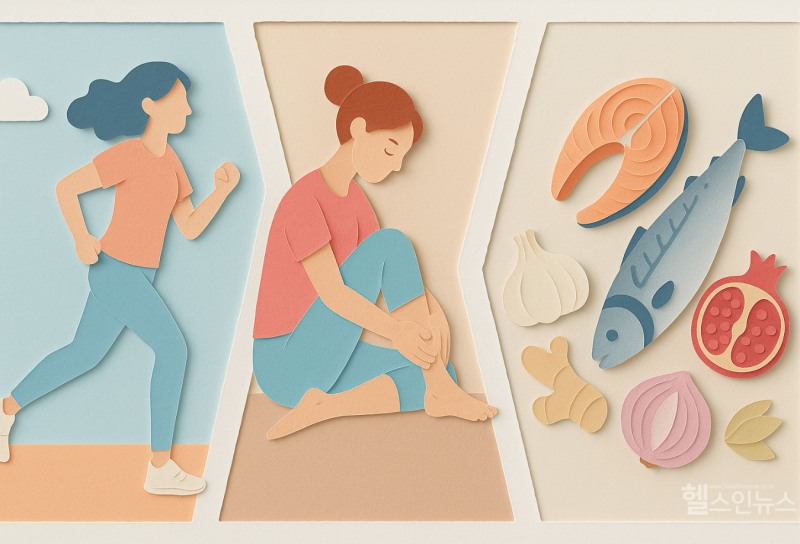Persistent symptoms—such as swelling, chronic fatigue, or coldness in the legs—if left untreated, can progress to serious vascular conditions, including varicose veins, deep vein thrombosis (DVT), or thromboembolism. Prioritizing healthy leg circulation is a vital first step toward maintaining overall systemic health.
Lifestyle Changes to Boost Circulation
Improving leg circulation starts with adjusting daily habits. Staying in one position for extended periods is a major cause of blood pooling in the legs. To counter this, stand up, walk briefly, or stretch every 30 minutes. Crossing your legs while sitting compresses blood vessels and hinders blood flow, so this posture should be avoided.
For individuals whose jobs require prolonged sitting or standing, medical-grade compression stockings can help improve circulation. These apply uniform pressure to the legs, aiding venous return and preventing blood stagnation. Elevating the legs above heart level for 15–30 minutes daily can reduce swelling and enhance circulation. Staying well-hydrated and soaking the feet in warm water stimulate peripheral blood vessels, helping to improve circulation and warm the body.
Exercise is a cornerstone of promoting leg circulation. Aerobic activities, such as walking for at least 30 minutes daily, activate calf muscles and improve venous blood flow, reducing swelling and fatigue. Climbing stairs also strengthens cardiovascular health. Studies suggest that regularly climbing five flights of stairs a day may reduce the risk of cardiovascular disease by about 20%.
Simple exercises such as heel raises—lifting the heels for five seconds before slowly lowering them—strengthen the calf muscle pump and enhance blood flow. Ankle dorsiflexion, pulling the toes toward the body while seated, is another convenient option. Even small movements, like gently shaking the legs while seated, can prevent venous stasis. Incorporating yoga or stretches targeting the quadriceps further improves blood flow and reduces swelling.
Massage and Acupressure to Improve Circulation
Massaging the calves, the body’s “second heart,” can significantly improve systemic circulation. The key is to massage upward, from the ankles toward the knees, to facilitate venous return. A simple technique involves sweeping the palms from the Achilles tendon to the back of the knee. Alternatively, press the inner calf with thumbs or alternate pressing between the Achilles tendon and knee. For the outer calf, gently push upward from the ankle to the knee.
Foot massages also enhance circulation. Spreading the toes individually or stimulating the soles can improve lymphatic flow. Raising the toes for 2–3 seconds while keeping the heels grounded offers a dual benefit of relaxing the calves and promoting circulation.
Traditional acupressure points can amplify these effects. The Chengshan point, located at the center of the calf, aids upward blood flow. located four finger-widths above Chengshan, is believed to relieve muscle tension and lower back pain. The Yinlingquan point, on the inner shin, is effective for reducing swelling and improving circulation when massaged in circular motions.
Foods and Teas to Support Circulation
Diet plays a crucial role in leg circulation. Foods that maintain healthy blood vessels and promote smooth blood flow are essential. Fatty fish like salmon, mackerel, and herring, rich in omega-3 fatty acids, regulate blood cholesterol and improve vascular health. Garlic’s allicin compound dilates blood vessels, stabilizing blood pressure and enhancing flow. Beets and pomegranates, high in nitrates and antioxidants, support vasodilation and blood flow. Leeks and onions, with their warming properties and allyl sulfide compounds, also promote circulation.
Herbal teas offer additional benefits. Ginger tea warms the body and dilates blood vessels to increase blood flow. Cinnamon tea lowers blood cholesterol and supports vascular health. Schisandra tea strengthens joints and muscles, improving knee circulation in colder seasons. Goji berry tea, traditionally considered rich in circulation-supporting compounds, is often combined with ginger and jujube for enhanced effect.

Habits to Avoid for Healthy Circulation
Improving leg circulation requires not only adopting beneficial habits but also avoiding those that impede blood flow. Tight clothing or shoes can compress blood vessels, leading to blood pooling, swelling, and circulation problems over time. Excessive sodium intake draws fluid into tissues, leading to edema, so a low-sodium diet is recommended.
While exercise is essential for circulation, certain movements—such as deep squats or planks performed with breath-holding—can raise intra-abdominal pressure and potentially worsen varicose veins. Most critically, smoking and excessive alcohol consumption must be avoided. and promotes blood thickening, which impairs circulation, while heavy alcohol consumption raises blood pressure and further harms vascular health.
By integrating these lifestyle changes, exercises, dietary adjustments, and mindful habits, you can significantly enhance leg circulation and support your overall cardiovascular health.
Haeun Oh, HEALTH IN NEWS TEAM
press@hinews.co.kr


